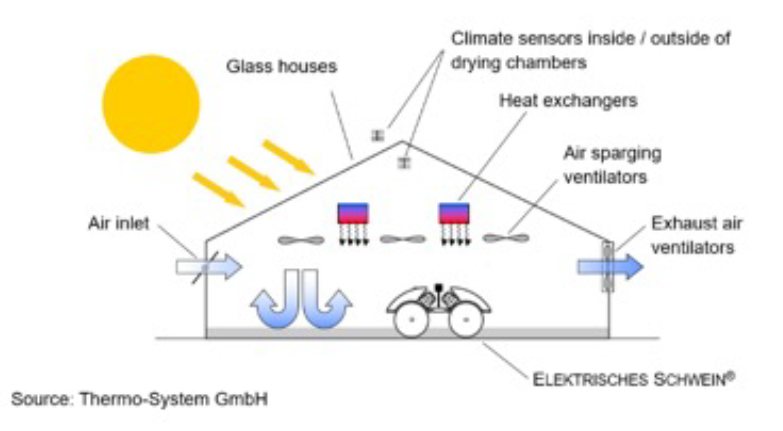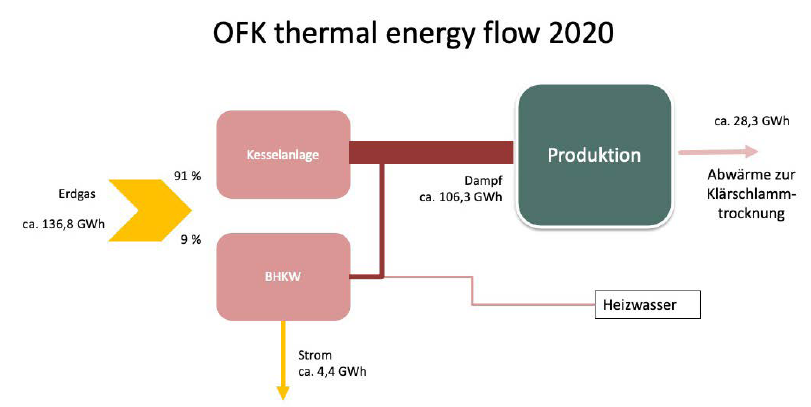Case Study 9
Solar and Waste Heat Drying of Wastewater Treatment Plant Sludge
On average around 70% of ABP is moisture and this is evaporated in the rendering process. Along with additional process and cleaning water around 1 tonne of water must be evaporated per tonne of ABP processed. This is an energy intensive process and maximising waste heat energy recovery is essential for minimising the carbon footprint of the process.
The Oldenburger Fleischmehlfabrik GmbH, Kampe, (OFK) operates five rendering lines processing around 230,000 tonnes of ABPs per year.
The evaporated water from the ABP processing is condensed and cooled before treatment in OFKs wastewater treatment plant. Most of the waste heat available from condensation is used in evaporation or waste heat recovery systems at OFK. Nonetheless, considerable amounts of lower grade heat energy remains in the waste air stream after condensation which has a temperature of 70-100 °C. Unless recovered, this heat is lost into the atmosphere.
“This optimal use of waste heat and renewable solar energy reduces the carbon footprint of OFK, the meat supply chain and the local community”
Since 2008 this residual heat from OFK is used to dry sludge from their wastewater treatment plant and sludge from local municipal sewage treatment plants. The heat energy is exchanged to a hot water heating circuit which heats the sludge drying plant.
The sludge drying plant thickens 40,000 tonnes of sludge per year, increasing the sludge dry matter content from 22% to 66%, enabling the dried sludge to be used as a biomass fuel in power stations.
In 2020, the residual heat used in the sludge drying plant was 25% of the steam heat demand for the rendering process or 28.3 GWh. The residual heat provides 80% of the demand for the sludge drier; the remaining 20% comes from direct solar radiation in the glass halls where the drying takes place as illustrated in the figure below.
This optimal use of waste heat and renewable solar energy reduces the carbon footprint of OFK, the meat supply chain and the local community.
Case Study 9 - Version 1, October 2021

